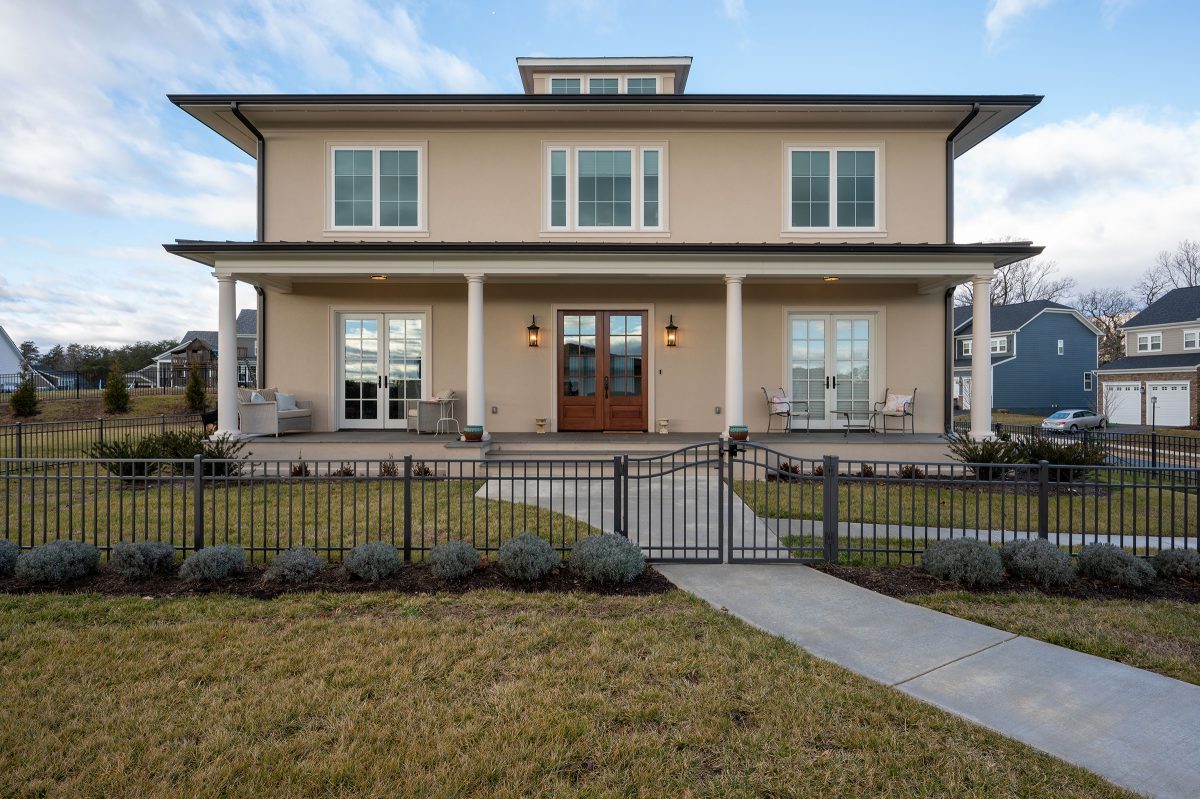For a lot of us home-decor lovers, the bones of a house are sometimes the least exciting part. We give some thought to what windows will get the best light, and how we want the kitchen to flow, but it’s the finishing touches—patterns, colors, furniture—that make designing a house fun.
Crozet couple Bob and Bev LoPinto have a different outlook. For them, good bones make a world of difference.
The couple started building their home in 2020. They chose Crozet to be close to family, and decided to do a custom build in a Stanley Martin community. Going custom was essential for the LoPintos, who wanted to build their house according to ancient Indian building principles that connect inner spirituality and social harmony with dwelling construction (think feng shui).
The principles go by various names, including vastu shastra (“structure science”) and sthapatya veda (“establishment knowledge”). It all roughly translates to the science of architecture, and it includes directives on orientation, placement, symmetry and proportion, and more.
From the outside, you might not even be able to tell that the LoPinto home is steeped in such ancient traditions. According to Bob, that’s because surface-level design doesn’t really matter, it’s what’s beneath that counts.
“I think there’s a lot of opportunity for personal preference,” says Bob. “We went with a Mediterranean, Italian-like stucco exterior for our house.”
It’s perhaps easiest to incorporate vastu into a new build where you have total control over all variables, but if you’re renting or buying, Bob says there’s one rule that’s most important to follow.
“The most important principle of vastu and sthapatya veda is the orientation,” says Bob. “That it’s true east or true north, any other orientation is not ideal. The rest [of the principles] make it even better, but if one has a choice, look for true east and true north.”
The LoPintos chose to face their house east to take advantage of the nourishing influence of the rising sun. Connection to nature is another big part of vastu, and a lot of the rules are designed to help residents take advantage of the benefits of the natural world.
Moving past the unassuming exterior, the house opens into a massive, two-story entryway atrium. While most atriums are grand, and meant to impress, the LoPinto atrium serves another, more intentional purpose.
In the center of the atrium—in the very center of the house—sits a table with flowers, which marks the brahmasthan of the house. The brahmasthan refers to the “silent center,” which is where the intelligence of the house is believed to live. The space is meant to help distribute positive energy, and serves as another reflection of nature, mimicking the “silent” center found in the heart of a cell, a seed, or even a hurricane.
The rest of the house flows from the atrium, and features 10-foot ceilings, lots of symmetry, and plenty of natural light sources. All the dimensions are precisely calculated, and the LoPintos made an effort to be energy efficient and sustainable where they could by installing triple pane windows, a high-efficiency heat pump, all-natural wood flooring, and limestone details.
The kitchen can be found in the southeast corner of the house.
“As the sun goes through the sky, its highest point is in the southeast, and your largest meal of the day should be lunchtime,” says Bob. “So the orientation of the sun coincides with the peak of your digestion, it’s in synchrony with nature.”
If the LoPintos need to take a moment away from all the hustle and bustle, they head to the meditation room in the northeast corner, another area known for conducting good vibes. The 12×12-foot room features soft lighting, and has metal-clad wiring with a built-in power kill switch.
“The bedrooms and the meditation room are all built with power kill switches, so when you’re sleeping you can turn off all the outlets so there’s no electromagnetic influence,” Bob says.
The most notable part of the house is the lit cupola that sits atop the roof and glows different colored hues. A glowing cupola isn’t mandated by vastu—”that was for fun,” says Bob.
For the LoPintos, it’s a design they can feel.
“You walk in and feel uplifted, not imposed upon,” says Bob. “I wouldn’t live in any other kind of house, and once you’re in it you won’t want to leave.”
